Palak puri recipe with step by step pics. Here is a delicious variation of poori made with spinach leaves, ginger, green chillies and a few spices. These poori have a beautiful green color and look good on the dining table.
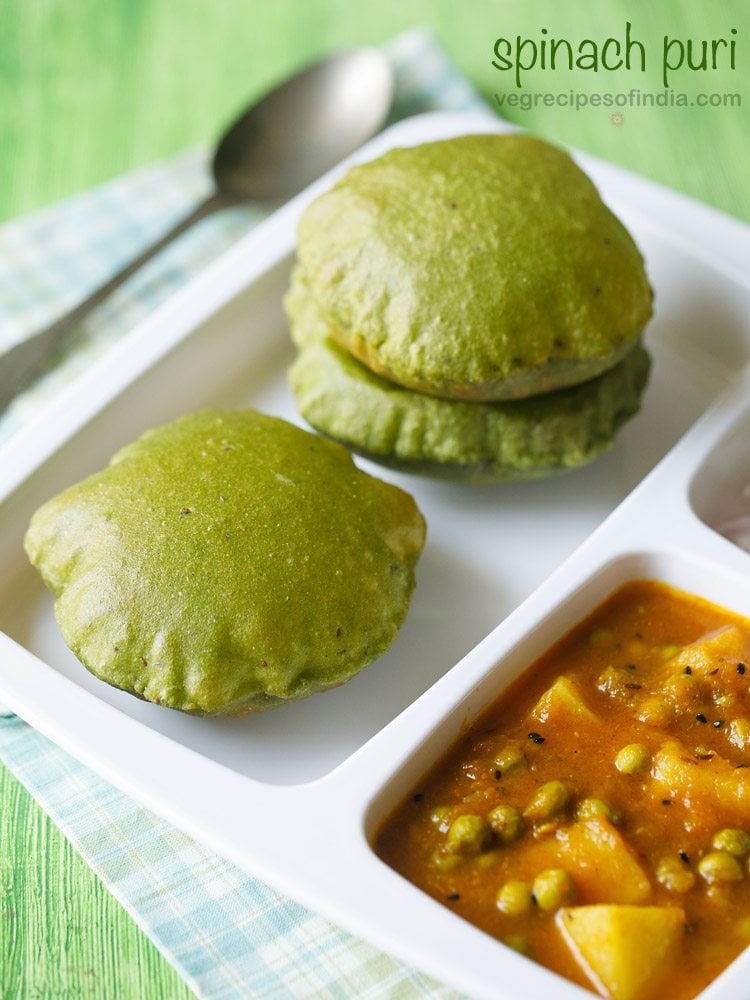
Making palak puri is very easy. I follow the same method for making them as that of Palak paratha.
Making palak poori or palak paratha is a good way to disguise greens like spinach from kids who do not eat them. In your cooking, you can be innovative to sneak in some veggies for kids who do not like to eat vegetables.
Vegetable purees or fruit purees can be added to a puri or chapati dough and you can make different types of poori or flatbreads like Beetroot poori or Mangalore buns or this palak puri.
I add spices like carom seeds and asafoetida in the palak poori dough as they help in digestion. You can alter their quantity as per your preference or can skip adding also. Apart from digestive properties, carom seeds also give a good aroma and taste.
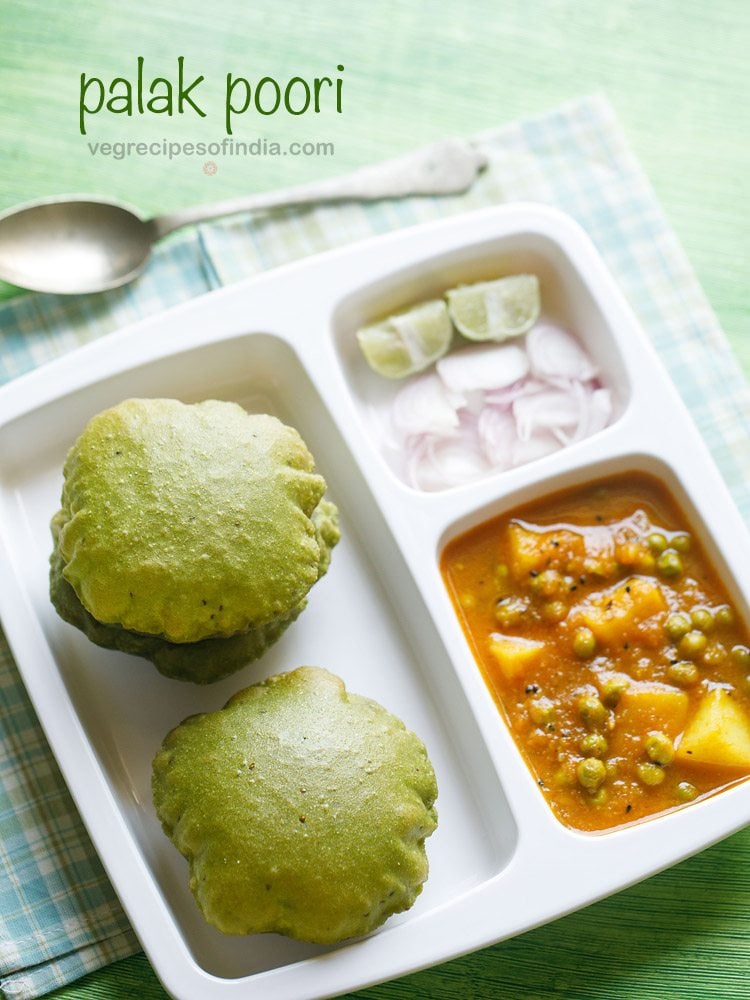
Palak poori can be served hot or warm with aloo sabzi or aloo matar or Vegetable Kurma or Chana Masala or mutter paneer or any veg gravy or curry of your choice.
It will also taste good with tea and can be served as a tea-time snack. Usually I prefer to make them for weekend breakfast.
How to make palak poori or palak puri
A) blanching palak (spinach)
1. Rinse palak leaves in fresh water very well. Drain all the water. Use a colander or strainer while rinsing. You will need 100 grams palak or 2.5 to 3 cups of roughly chopped spinach leaves.
If you plan to use the spinach stems then make sure they are fresh and tender.
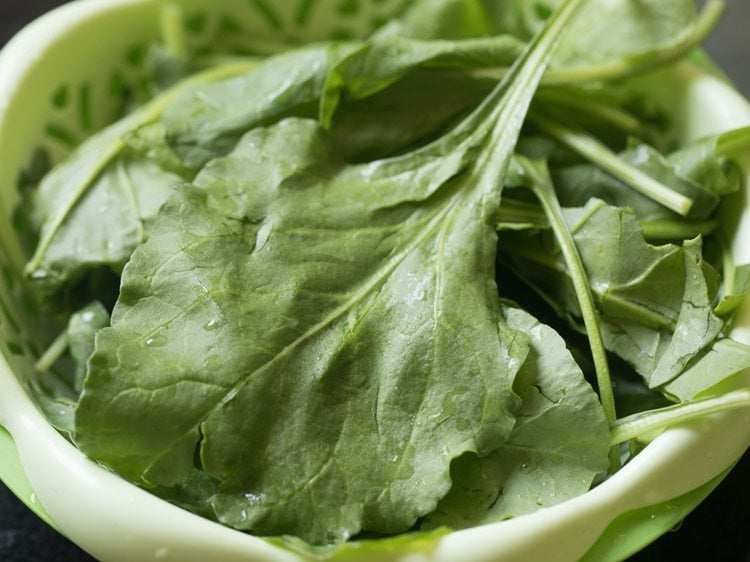
2. In a pan heat 3 cups water till it starts boiling. Then keep the pan down.
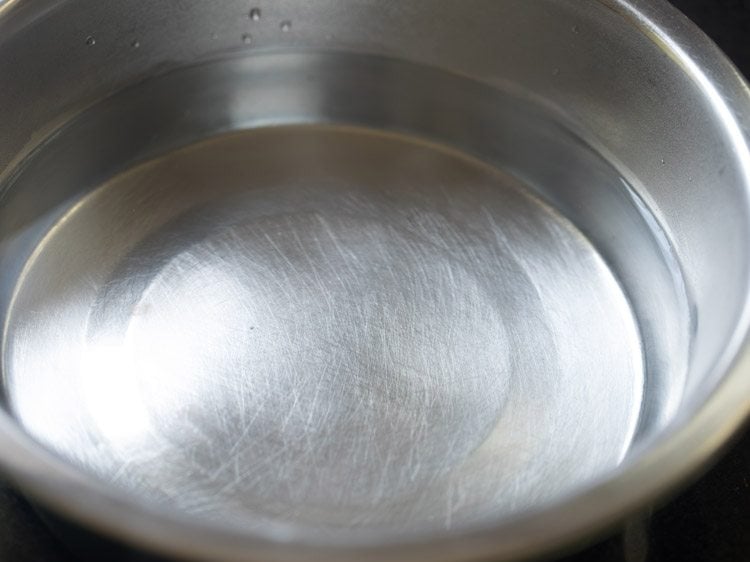
3. Place the spinach leaves in the hot water. Immerse the spinach leaves in the hot water and blanch for 1 minute.
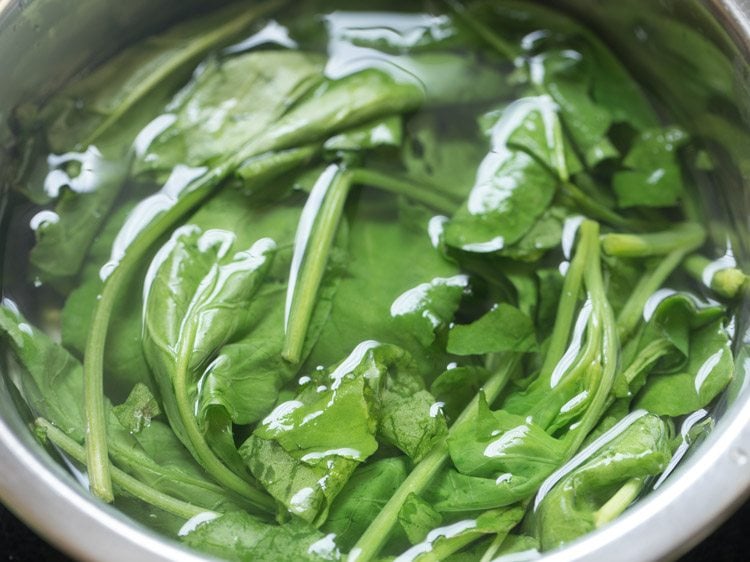
4. With the help of pasta tongs, lift the blanched leaves.
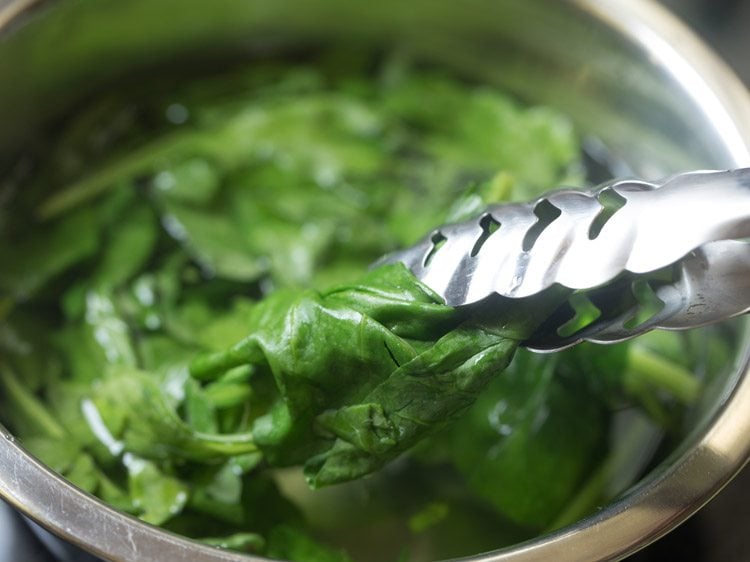
5. Then place the blanched spinach leaves in 2 cups of cold water.
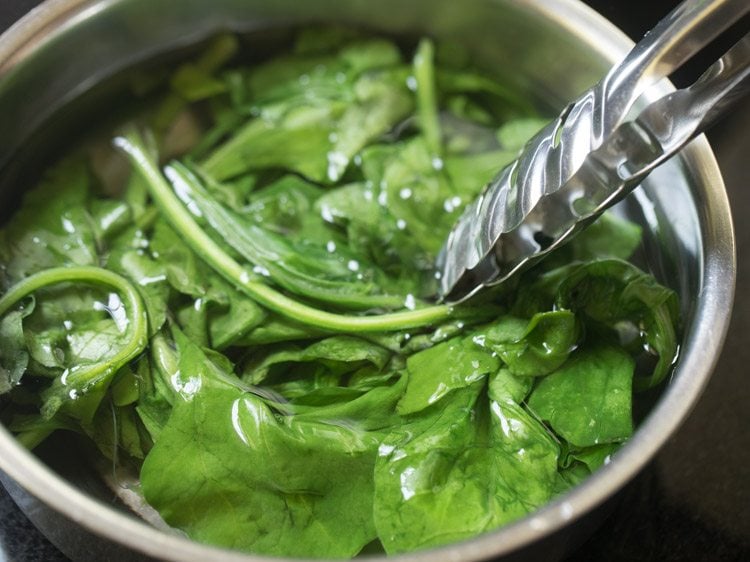
6. Keep the spinach leaves in cold water for 1 minute.
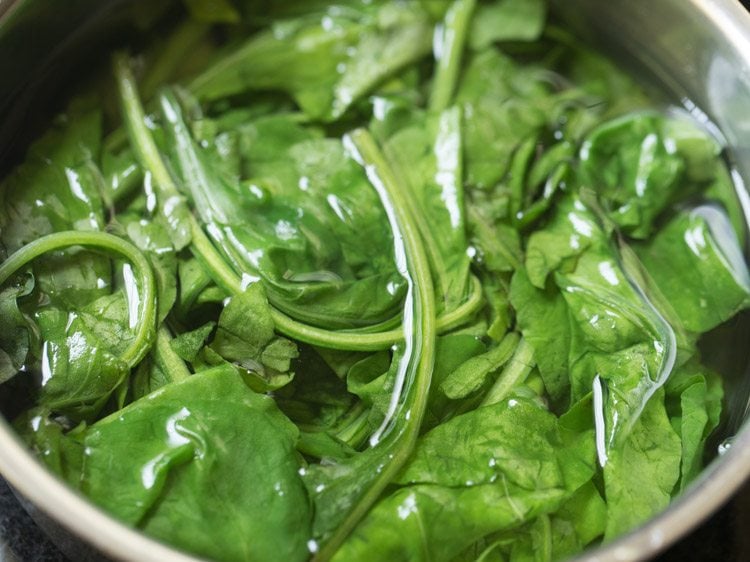
7. Again using pasta tongs place the spinach leaves in a blender or grinder jar. Add 1-inch ginger (chopped) and 1 green chili (chopped).
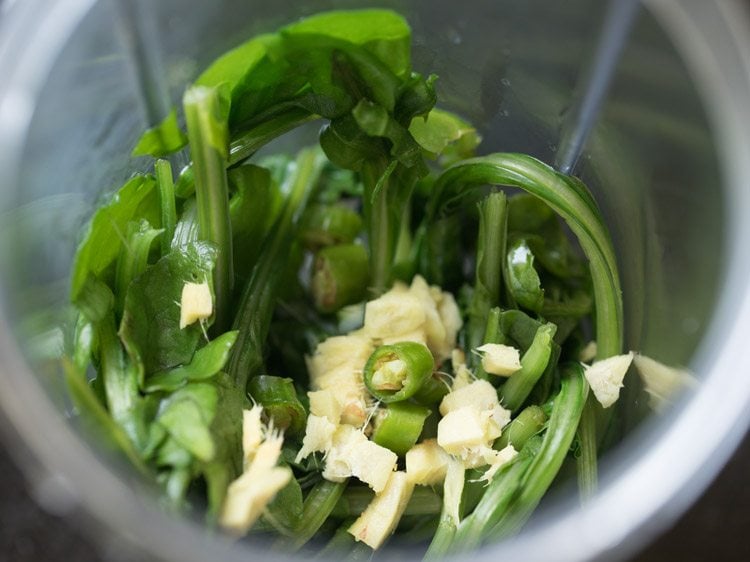
8. Without adding any water blend to a smooth puree. Keep aside.
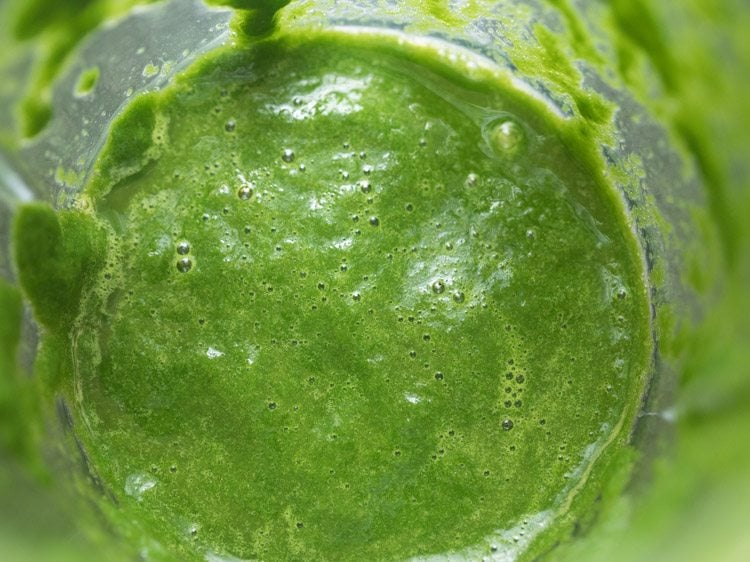
Making palak puri dough
9. Take 2 cups of whole wheat flour in a pan or mixing bowl. Also add ½ teaspoon carom seeds (ajwain), 1 pinch asafoetida (hing) and salt as per taste.
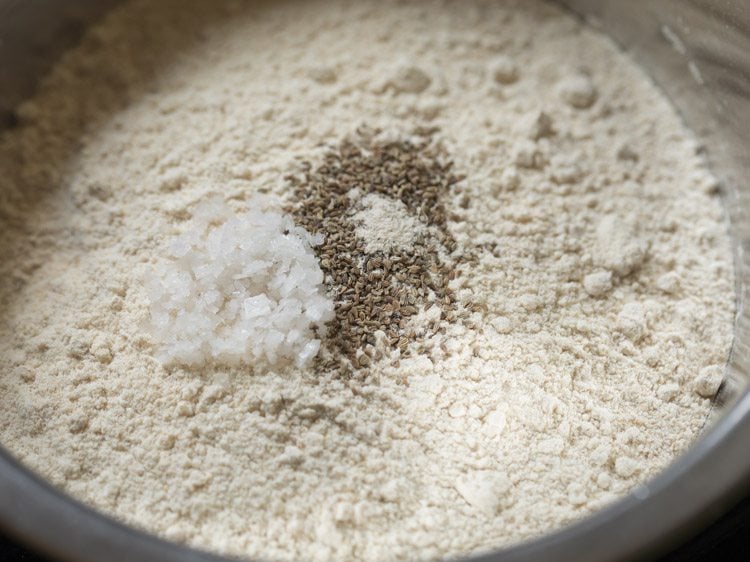
10. Add the prepared spinach puree.
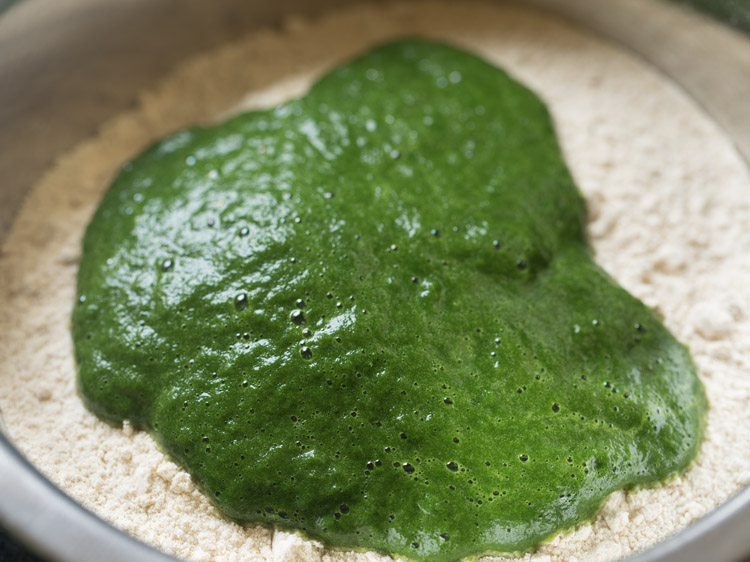
11. Mix the spinach puree with the whole wheat flour with a spoon.
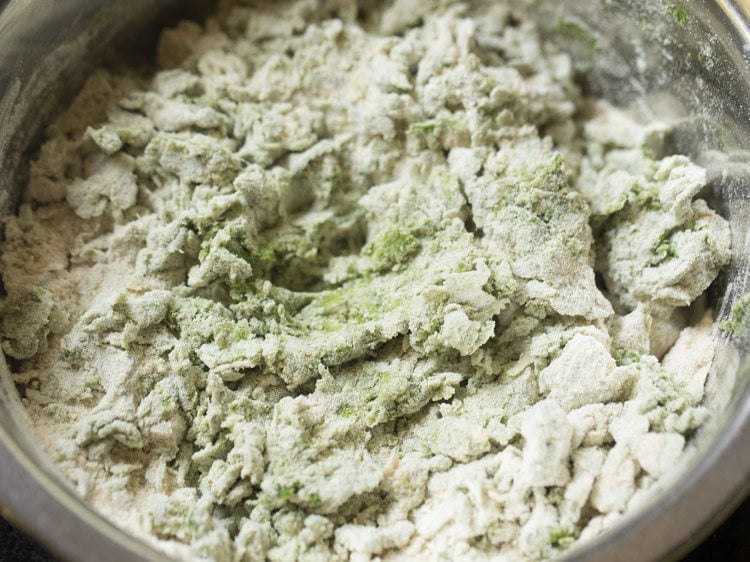
12. Shake and rinse the blender or mixer jar with ¼ to ⅓ cup water so that the spinach puree stuck to the sides and the bottom of the jar gets mixed with the water. Add this water in parts to the flour mixture.
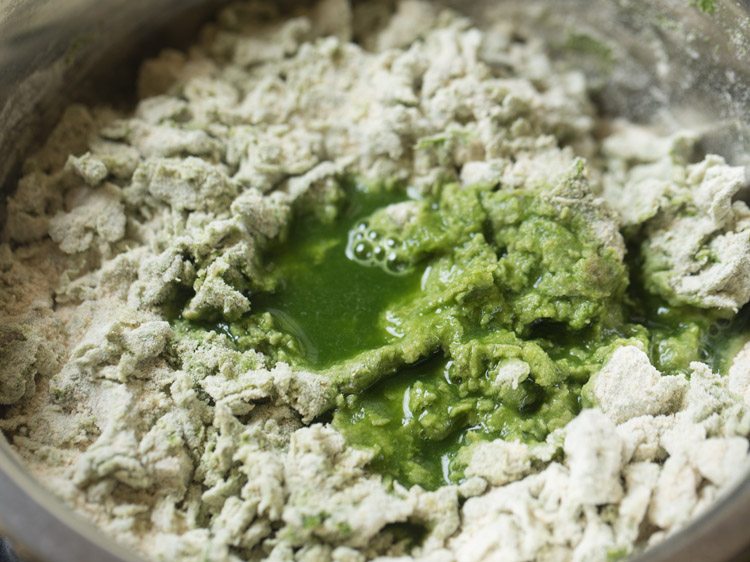
13. Adding water in parts knead to a semi-soft dough. Cover the pan with a cloth or lid and keep aside for 10 minutes so that the dough rests.
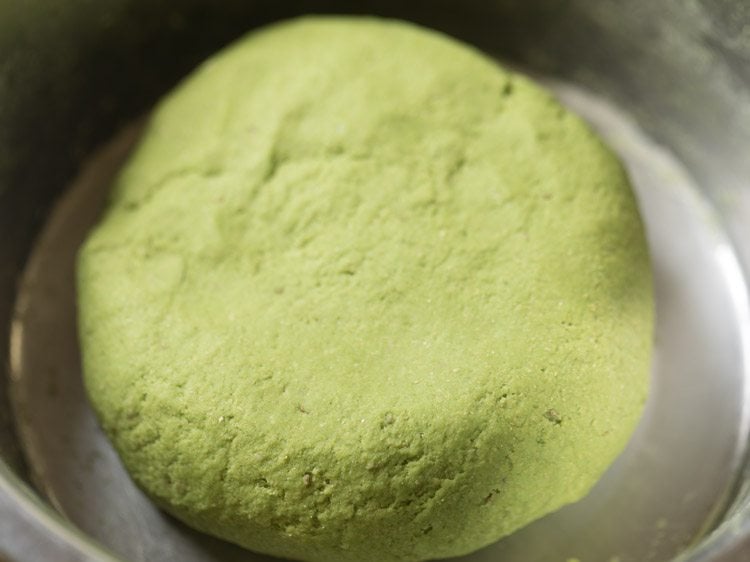
Rolling palak poori
14. Then divide the dough into small or medium sized balls. Roll them into neat round balls. Keep them covered with a lid or clean kitchen towel.
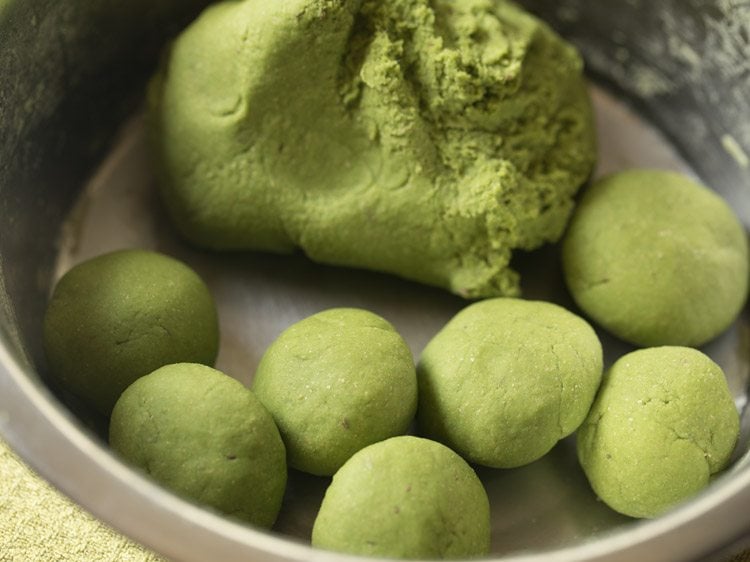
15. Take one dough ball on a rolling board. Flatten it and spread some oil on both sides of the dough.
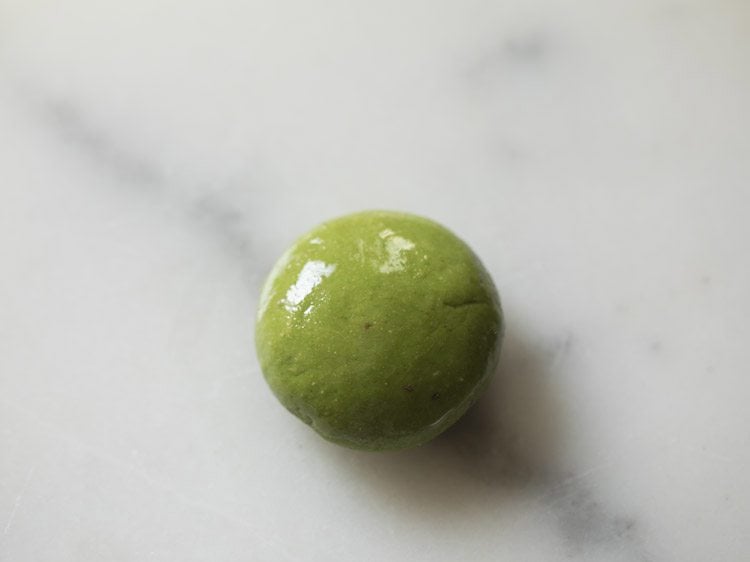
16. With a rolling pin (belan), gently roll to a 4 or 5 inches poori. Roll to poori which is neither thick nor thin.
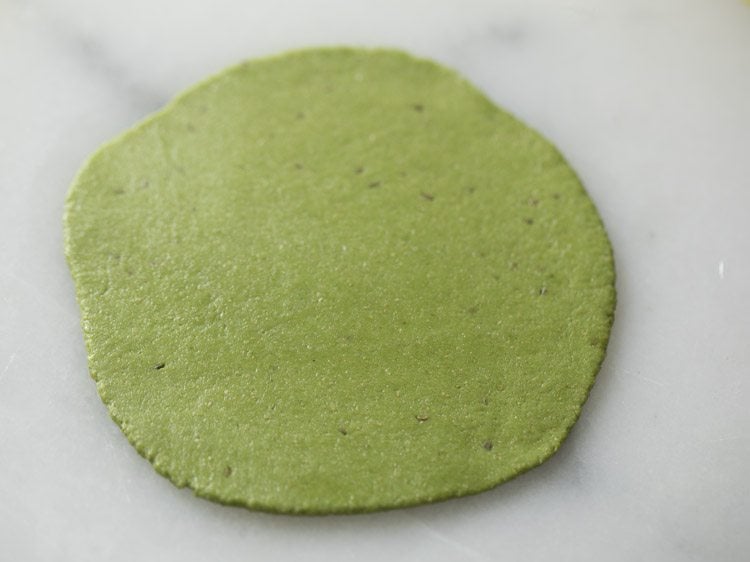
Frying palak poori
17. Heat oil in a pan or kadai. Check the oil temperature by adding a tiny piece of dough to it. If it comes steadily and gradually on top, the oil is medium hot and ready for the poori to be fried.
If it comes up slowly or stays at the bottom of the pan then it means the oil is not hot.
If it comes up very quickly and gets browned or burnt fast then the oil is very hot for frying.
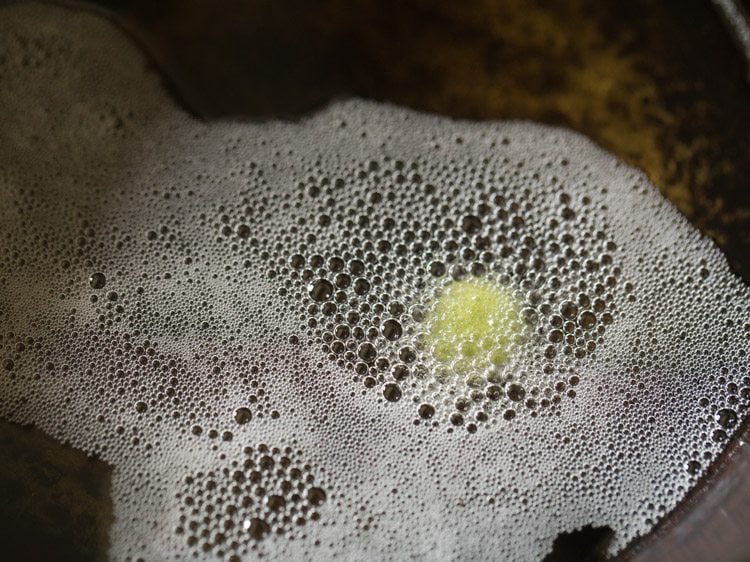
18. Gently slid one palak puri in the medium hot oil.
Depending upon the size of the kadai you can fry one or more poori together. But don’t overcrowd the kadai. There should be enough space between two pooris so that they puff up easily.
Since I use small kadai, I generally fry one poori at a time and simultaneously roll the next poori.
If more than one person is cooking then you can fry 2 to 3 pooris together as you can give your total attention to frying or rolling.
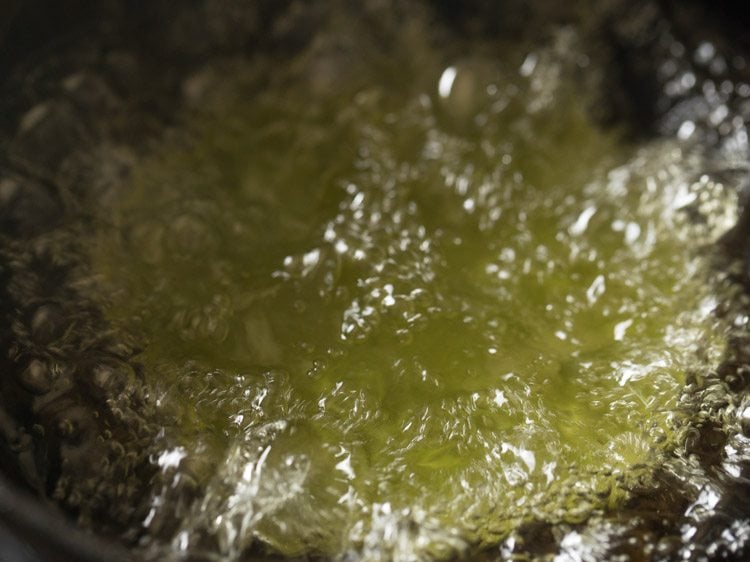
19. The oil will bubble, sizzle and the poori will come on top of the oil.
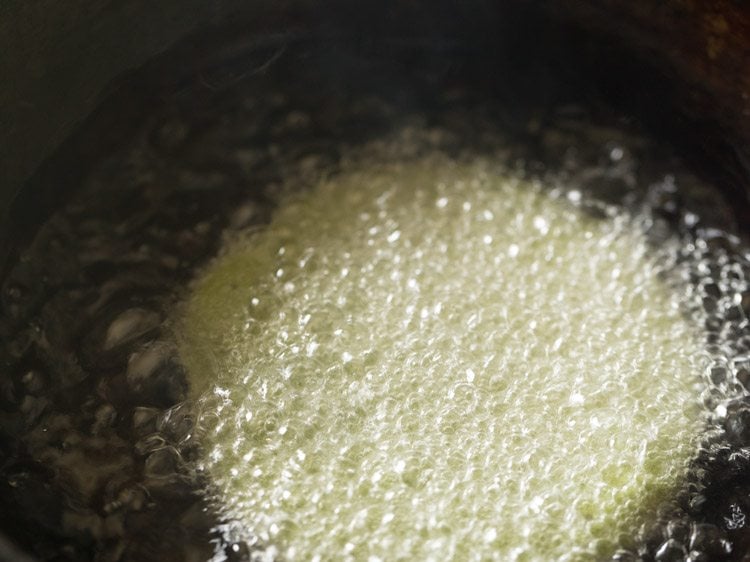
20. Nudge gently with a slotted spoon, so that the poori puffs up while frying.
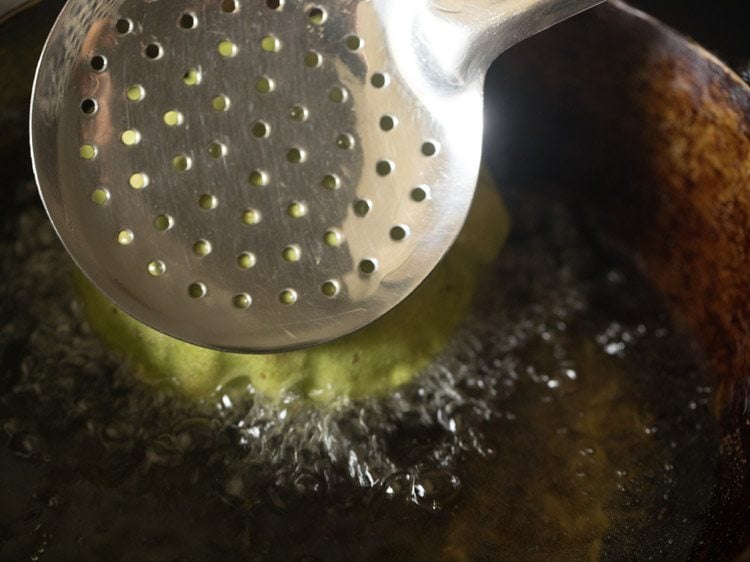
21. Fry till the oil stops sizzling. If poori becomes too golden then green colour will not be there.
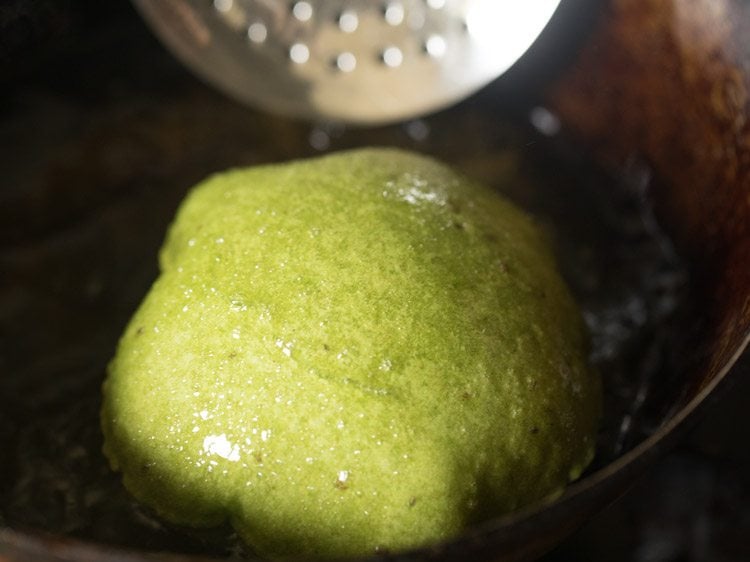
22. Then with the slotted spoon, gently and carefully turn it over.
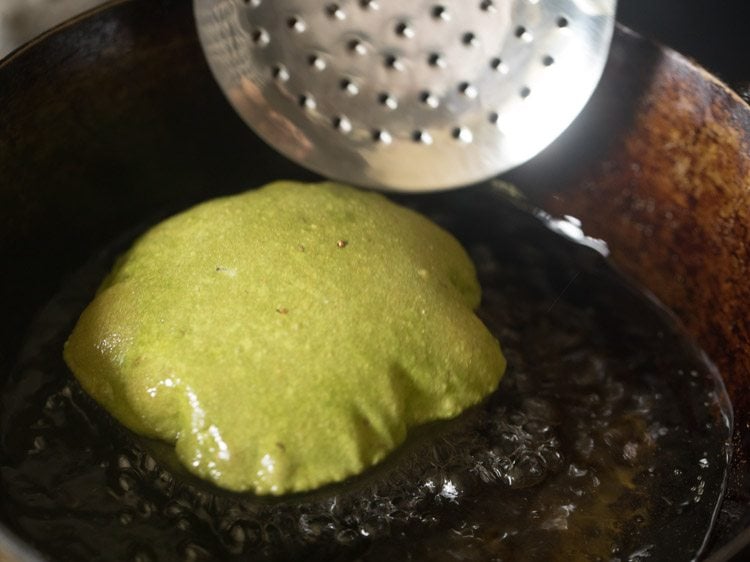
23. Fry the second side of the puri. Fry poori till the oil stops sizzling. If you want you can turn over the poori once or twice more.
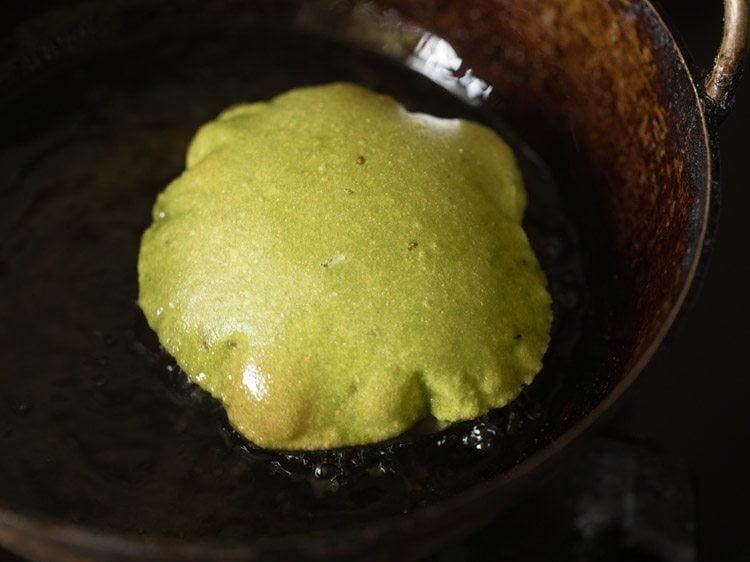
24. Remove the palak puri carefully with the slotted spoon draining as much as oil as possible in the kadai.
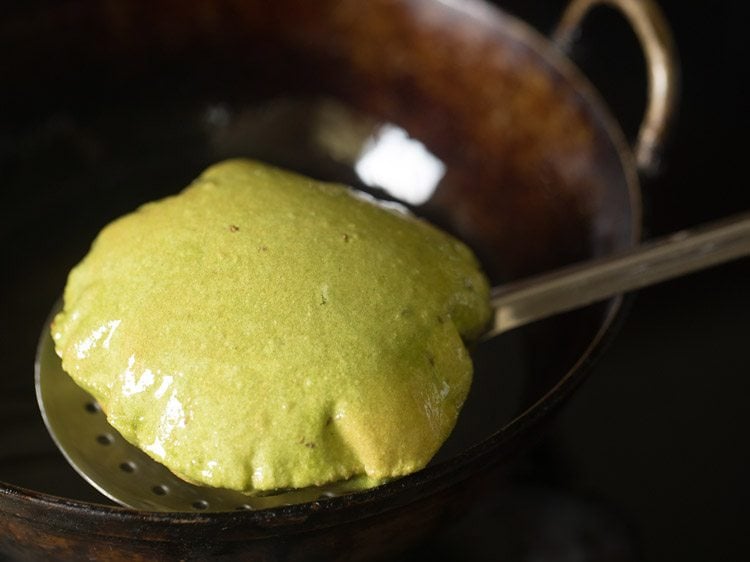
25. Place the fried puri on kitchen paper towels to remove excess oil. Roll the remaining palak poori in the same way and fry them in batches.
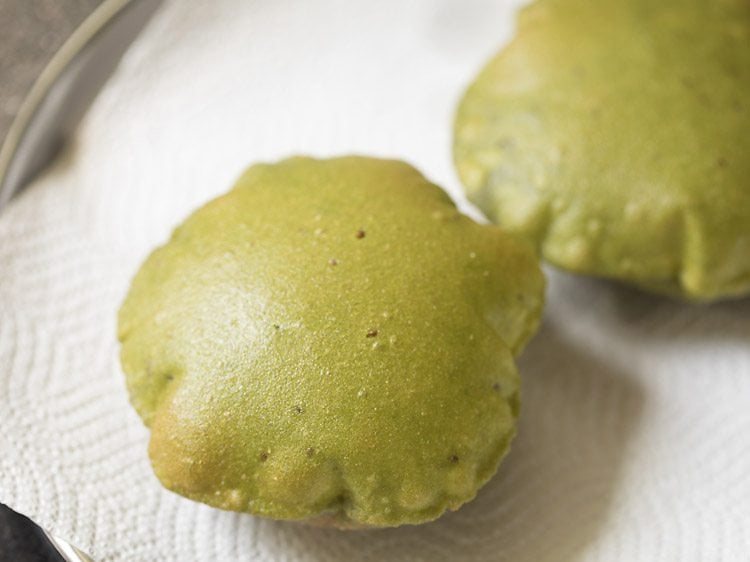
26. Serve palak puri hot or warm with potato curry or chana masala or aloo rasedar or veg kurma or any veg gravy or curry of your choice.
Best to serve them hot as they are prepared. These pooris stay soft even after cooling so you can also pack them for a lunch box or for picnics or small trips.
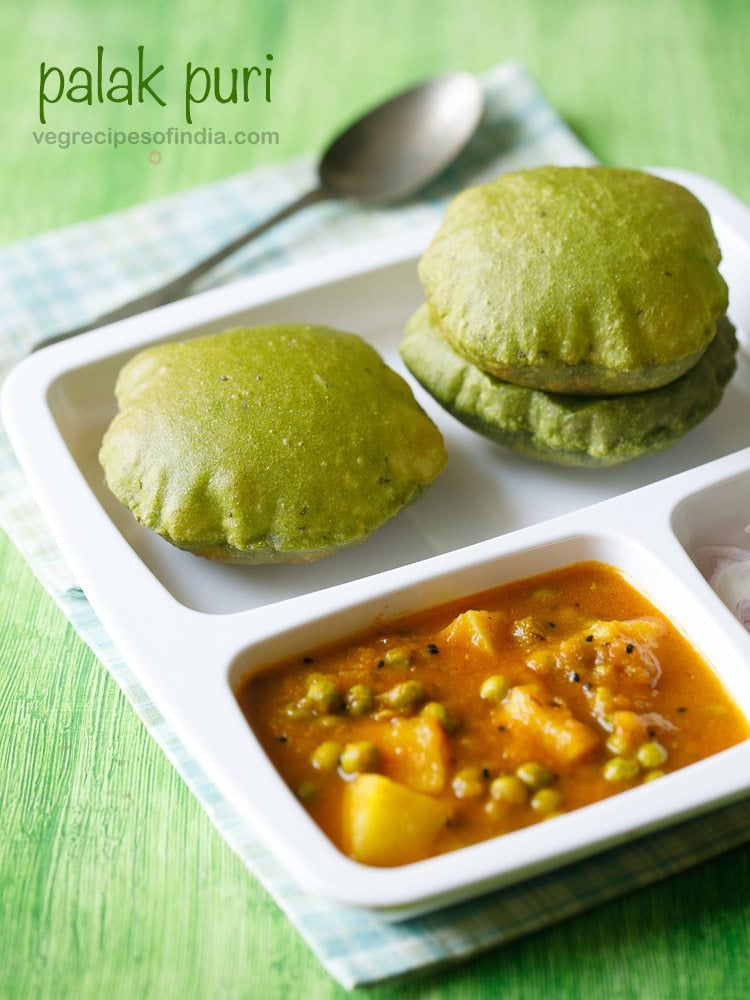
Few more tasty recipes for you!
Please be sure to rate the recipe in the recipe card or leave a comment below if you have made it. For more vegetarian inspirations, Sign Up for my emails or follow me on Instagram, Youtube, Facebook, Pinterest or Twitter.
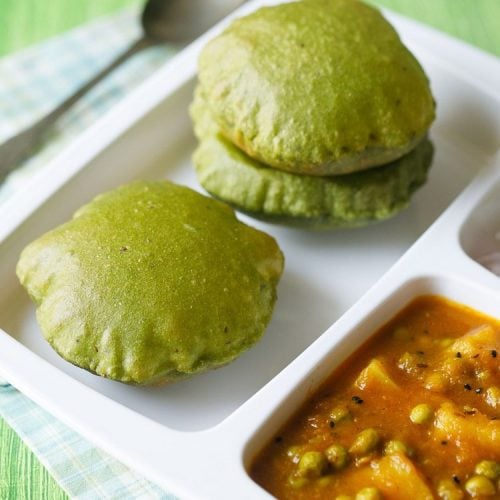
Palak Puri
Ingredients
for blanching & making puree
- 100 grams palak or 2.5 to 3 cups roughly chopped spinach
- 3 cups hot boiling water
- 2 cups cold water
- 1 inch ginger – chopped
- 1 green chili – chopped
other ingredients for palak puri
- 2 cups whole wheat flour
- ½ teaspoon carom seeds (ajwain)
- 1 pinch asafoetida (hing)
- ¼ to ⅓ cup water or add as required
- oil for deep frying, as required
Instructions
blanching palak
- Rinse palak leaves in water very well. Drain all the water. Use a colander or strainer while rinsing.
- In a pan heat 3 cups water till it starts boiling. Then keep the pan down.
- Place the palak leaves in the hot water. Immerse the palak leaves in the hot water and blanch for 1 minute.
- With the help of pasta tongs, lift the blanched leaves.
- Then place the blanched leaves in 2 cups cold water.
- Keep the leaves in cold water for 1 minute.
- Again using pasta tongs place the leaves in a blender or grinder jar. Add 1 inch ginger (chopped) and 1 green chili (chopped).
- Without adding any water blend to a smooth puree. Keep aside.
making palak puri dough
- Take 2 cups whole wheat flour in a pan or mixing bowl. Also add ½ teaspoon carom seeds (ajwain), 1 pinch asafoetida (hing) and salt as per taste.
- Add the palak puree. mix the palak puree with the wheat flour.
- Shake & rinse the blender or mixer jar with ¼ to ⅓ cup water so that the puree stuck to the sides and bottom of jar gets mixed with the water. Add this water in parts to the flour mixture.
- Adding water in parts knead to a semi-soft dough. Cover and keep aside for 10 minutes.
- Then divide the dough in small or medium sized balls. Roll them into neat round balls.
- Take one dough ball. Flatten it and spread some oil on both sides of the dough.
- With a rolling pin (belan), gently roll to a 4 or 5 inches poori. Roll to poori which are neither thick nor thin.
frying palak poori
- Heat oil in a pan or kadai. Check the oil temperature by adding a tiny piece of dough in it. If it comes steadily and gradually on top, the oil is medium hot and ready for the poori to be fried.
- Gently slid one puri in the medium hot oil.
- The oil will bubble, sizzle and the poori will come on top of the oil.
- Nudge with a slotted spoon, so that the palak poori puffs up while frying.
- Fry till the oil stops sizzling. If poori becomes too golden then green colour will not be there.
- Then with the slotted spoon, gently turn over.
- Fry the second side of the palak puri. Fry poori till the oil stops sizzling. If you want you can turn over the palak poori once or twice more.
- Remove the puri with the slotted spoon draining as much oil as possible.
- Place the fried puri on kitchen paper towels to remove excess oil. Prepare remaining palak poori in the same way.
- Serve palak puri with potato curry or chana masala or veg kurma or any veg gravy or curry of your choice. It can also be served as a tea time snack or can be packed for tiffin box.
Notes
Nutrition Info (Approximate Values)
This Palak Puri Post from the blog archives, first published in May 2018 has been republished and updated on December 2022.
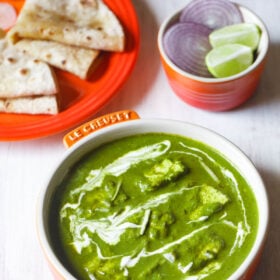
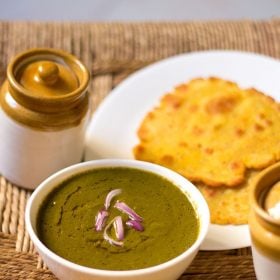
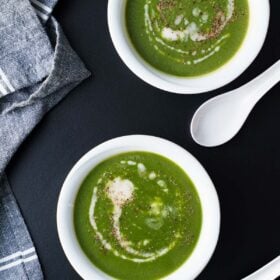
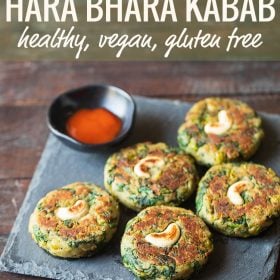








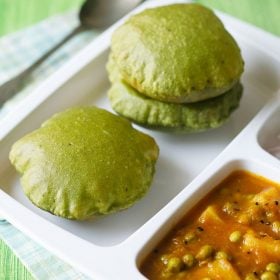
Hi Dassana, I tried this recipe today but found the omam seeds kept breaking holes into the pooris once in the oil. Did you face this issue? Should I powder it before use? The poori’s taste was good though.
Also, once out of the oil my pooris tend to deflate. How do I keep them inflated like in your pictures?
i have never faced this issue. try rolling the pooris slightly thick and do not roll thinly. no need to powder. you can just crush the omam seeds coarsely in the mortar-pestle. after frying the pooris, keep them on a large plate or tray lined with a kitchen paper towel or paper napkin. do not place the poori on top of each other. they will not deflate. but they should be eaten hot or warm.
if you are not able to serve them hot, then place them in a large roti basket or casserole lined with a kitchen paper towel. as soon as you place each hot poori in the casserole, close the lid. this way place all the pooris in the casserole after frying them. they will remain hot and can be had later after you finish frying all the pooris.